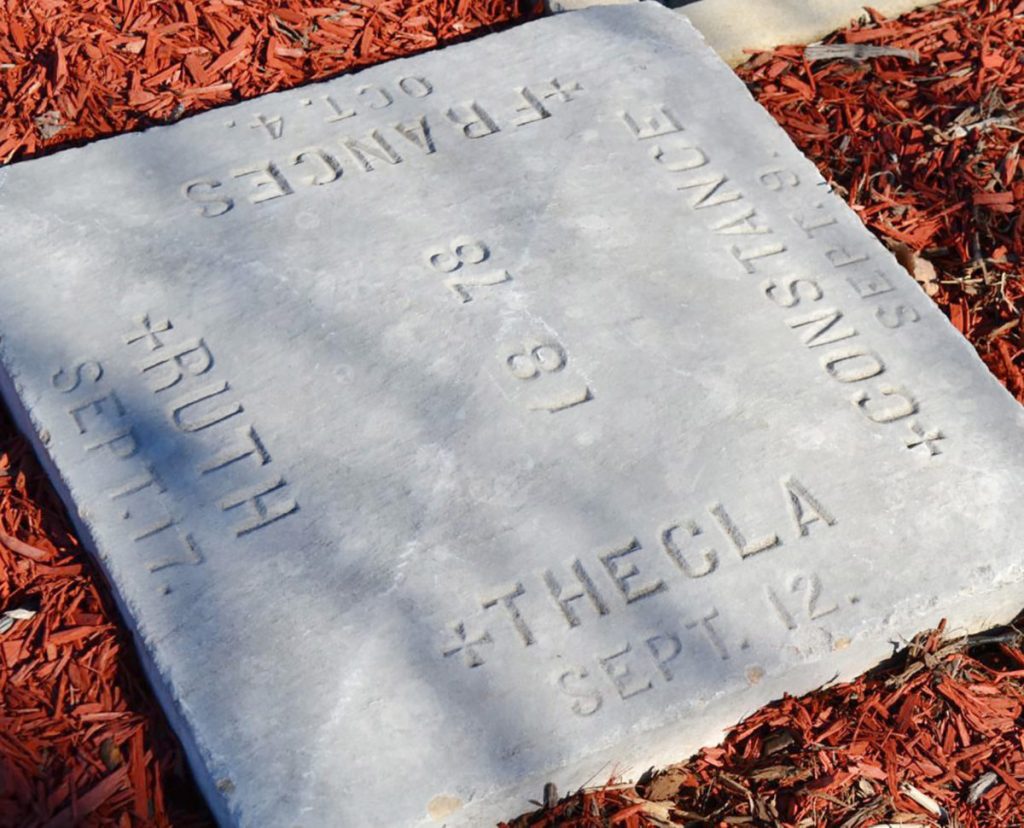By Bill Carey
WilliamsonHerald.com
At a time such as this, it may give comfort to know that a pandemic gave us some of Tennessee’s greatest heroes.
A friend recently took me on a tour of Elmwood Cemetery in Memphis and showed me the graves of four Episcopal nuns who gave their lives caring for others during the yellow fever epidemic of 1878.
These women visited homes in which people were dying of yellow fever in August and September of that year. They nursed the sick. They cared for orphans. They wrote letters asking people from across the country to send help.
The best known of these was Sister Constance. By 1878, she was headmistress of the St. Mary’s School for Girls in Memphis. In August of that year, she and another nun named Thecla were spending the summer in New York when they heard that an epidemic had struck Memphis.
At a time when thousands of residents were running away from the city, Sisters Constance and Thecla went back into Memphis.
When the sisters got there, about 10 people were dying per day and hospitals were overfilled. Most people who got yellow fever stayed at home and put a sign on their door indicating the presence of the plague. Doctors and volunteer nurses such as Constance and Thecla went door to door trying to help those who were dying, making arrangements for the dead, and finding a place for orphaned children.
Unlike the strain of yellow fever that had attacked Memphis five years earlier, this disease moved fast. A person might feel fine on Friday, become ill on Saturday, and die on Sunday.
There was no known cure or vaccine. People either died or survived their encounter with the disease, and there wasn’t much doctors and nurses could do. Among the symptoms were fevers, chills, yellowing of the skin, and black vomit.
The death toll reached 70 in one day by Aug. 30, by which time the fever had begun to take its toll on those trying to help.
On Sept. 5, Constance told her colleagues that she felt like she had a fever coming on, but she refused to lay on a mattress since she knew it would have to be burned once she used it. Thecla admitted that she, too, was sick.
Constance died on Sept. 9. Thecla died three days later.
Today, we know that yellow fever is spread by mosquitoes. But in 1878, people had no idea what caused the epidemic. Authorities tried everything from covering the streets with lime to setting off explosives in a futile effort to stop its spread.
The death rate decreased by the end of September, but the plague continued until a hard frost arrived in late October. By that time, more than 17,000 people had been infected and more than 5,000 had died.
We now know that the fever originated in Western Africa, which is why African Americans, having inherited some immunity to the virus, proved far more likely to survive yellow fever than European white people. About 70% of the 6,000 white people who stayed in the city died of yellow fever. But only about 7% of the 14,000 African Americans who stayed in Memphis died.
Among others who died trying to treat the sick during the epidemic were Episcopal priests Louis Schuyler and Charles Parsons — a former Colonel in the Union army, by the way — along with two other nuns named Frances and Ruth.
The four nuns were buried at Elmwood Cemetery and given one tombstone, their graves in the shape of a cross.
Eventually, the limestone curbs that reflected the arrangement of their coffins were buried by silt, dust, and blowing topsoil. A few years ago, Mark Henderson, a grave restorer, rediscovered the stones and returned them to their original appearance.
“I think it gives everyone a true vision of what the beautiful grave was meant to convey,” Henderson says.

